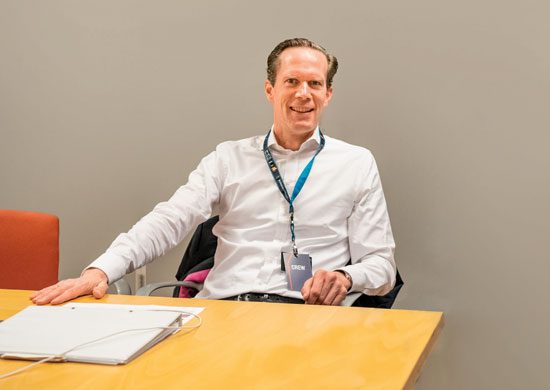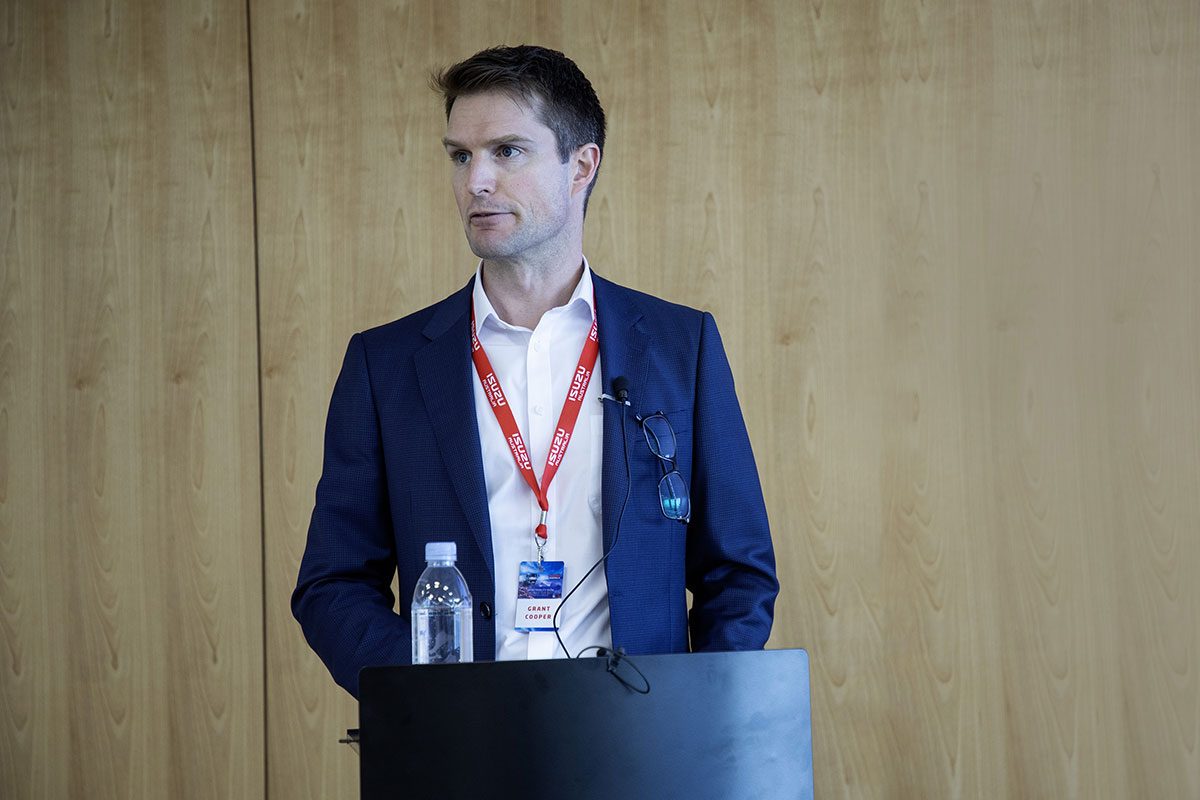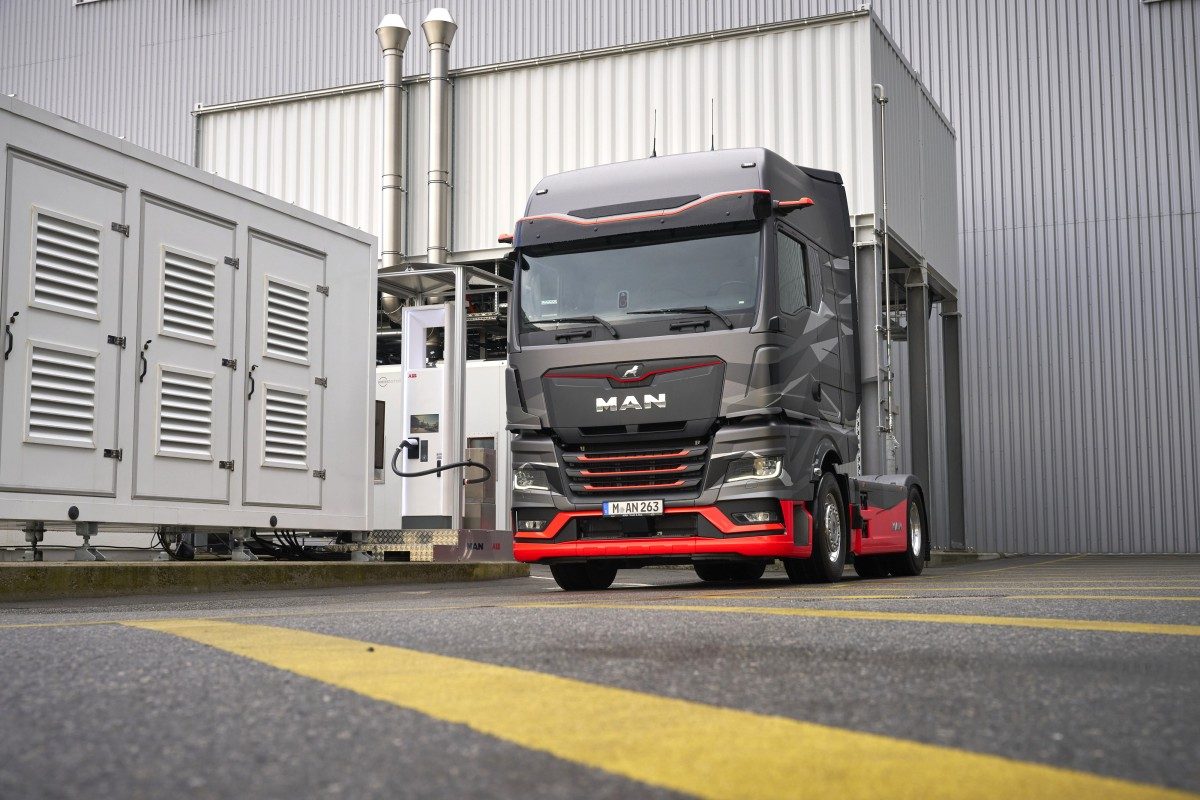INCOMING CARGO – TOMORROW’S MAN
OEMs have a tough row to hoe in this transitional phase of personal and commercial mobility. Having a few precious moments with a senior member of a Traton brand to get some behind the scenes insights is a rare opportunity.

Photo: Dr Frederik Zohm is a member of the executive board at MAN, and chief technical officer.
Dr Frederik Zohm is a member of the executive board at MAN, and chief technical officer. He‘s tall, roughly 6‘3”, charismatic, outrageously intelligent, and in that German mould of no-nonsense but with a definite sense of humour. It‘s a great combination because you know that if they laugh, it is actually funny. This is probably a time in history when you would absolutely want a job like his, and equally as justifiable, a time when you absolutely wouldn‘t want a job like his. Just like trying to implement the right strategy for a national Covid-19 response, there‘s so much that‘s unknown about the future, both immediate, and further down the road.
The TCO for the decisions these people make won‘t be known for a decade, and with that is the sobering fact that if you‘re Zohm, there‘s not too many ears between you and Traton CEO Andreas Renschler. Now if that‘s not motivation… We had the rare privilege of personal time with Zohm in Spain recently to talk about the new range and pry into broader topics. It was a fascinating opportunity, having already sat in a small media gathering late last year to hear Daimler‘s top truck and bus man Martin Daum chat about that brand‘s windscreen view of the world.
The big picture Competitors
Having watched what happened during information‘s upheaval, spotting your future competitors is a sobering thought for existing OEMs currently charting new waters. “Obviously we have our peers, existing OEMS, and with trucks that‘s difficult. Car models are more specific, but a truck‘s competitors can be far more broad. You‘re competing with brands who build a robust but more simple truck, and offering good ROI to lower cost operators. Then you have others, much more advanced, with many features. You have to adapt your technologies to handle both.” Zohm said that beyond the existing OEMs now there‘s the new wave: Amazon, Tesla, Nikola, and even Post in Germany, to name a few. “Who would have thought Post would ever be doing this, but they are. “By 2025/27 there will be new competitors who don‘t have to worry about legacy technologies, investing a billion in combustion to keep customers happy and competitive.
They are just focused on the new. Theirs is a much simpler model. Come in, take 10% of a market that has at least a decade of forecast growth, and live happily ever after. “Yes, they still need to move from PowerPoint and experimental vehicles to line produced trucks you and I can drive. But we do take them seriously for sure, they work with many of the same suppliers we do. “Then there‘s those working in the digital and information space only, companies like TomTom. They can in effect collect the same data we do. The EE (electrical and electronic) architecture of the new truck generation, and our investment in e-mobility, and products like our driver apps and RIO platform, all show how important we consider this space.”

Developing a global product
Developing a truck that‘ll find its way to the far-flung corners of the globe is a daunting feat. How do you develop a product that will satisfy the driver running the expressways of continental Europe, the one coping with the searing heat of the Middle East, and ‘ole mate crossing Arthurs Pass here in New Zealand? The answer is, focus on the common pillars of TCO, and driver acceptance. “Development is a continuous process; we‘re constantly receiving feedback from all over the world. For us it comes back to simplifying business, ‘what do our customers want‘, and ‘what do our customer‘s customers want?‘ There are global commonalities, ROI, driver comfort, and within that comes our individual direction, like development of the SmartSelect wheel.
“The new D26 Euro-6d engine released last year is a key part of the new truck, and accounts for just over 4% of the new machine‘s 8% operational savings over the previous model with the Euro- 6c engine. The rest of the savings come with improved aero, and efficiency features like MAN EfficientCruise. “We consulted with 700 drivers from 16 countries on the new truck, and completed over four million developmental kilometres, including extreme conditions. We have to make the driver‘s life better, more comfortable, and allow them to work smarter. Consultation with drivers was key in the development of the new cabin, with a rethink on instrument placement, intelligent clusters for the switches, and of course the SmartSelect that works just as well with dirty hands as it does with clean.”
Training games
A fascinating insight came with Zohm‘s view on the evolution of the driver training in order to optimise the customer‘s TCO and ROI. “A Boeing pilot cannot just get in an Airbus and fly it, and an Airbus pilot cannot fly a Boeing. They must be trained in the specific features of the aircraft. I see the same thing happening in trucks in the future. Once upon a time all trucks had the same five or six switches; once you found them you could operate the vehicle. Not so any more. Yes, an experienced driver could probably climb into the new TGX and probably make it go with the general knowledge they have, but there is no way they could get the most out of it, and repay the owner‘s investment as quickly as possible. The customers buy the trucks on the savings and efficiencies they offer, and drivers need to know how to get the most from them. The offerings we can bring using technologies is extensive and the right training is more and more important all the time. I see this as a key pillar moving forward, and I think a driver certification system with trucks is certainly coming.”





